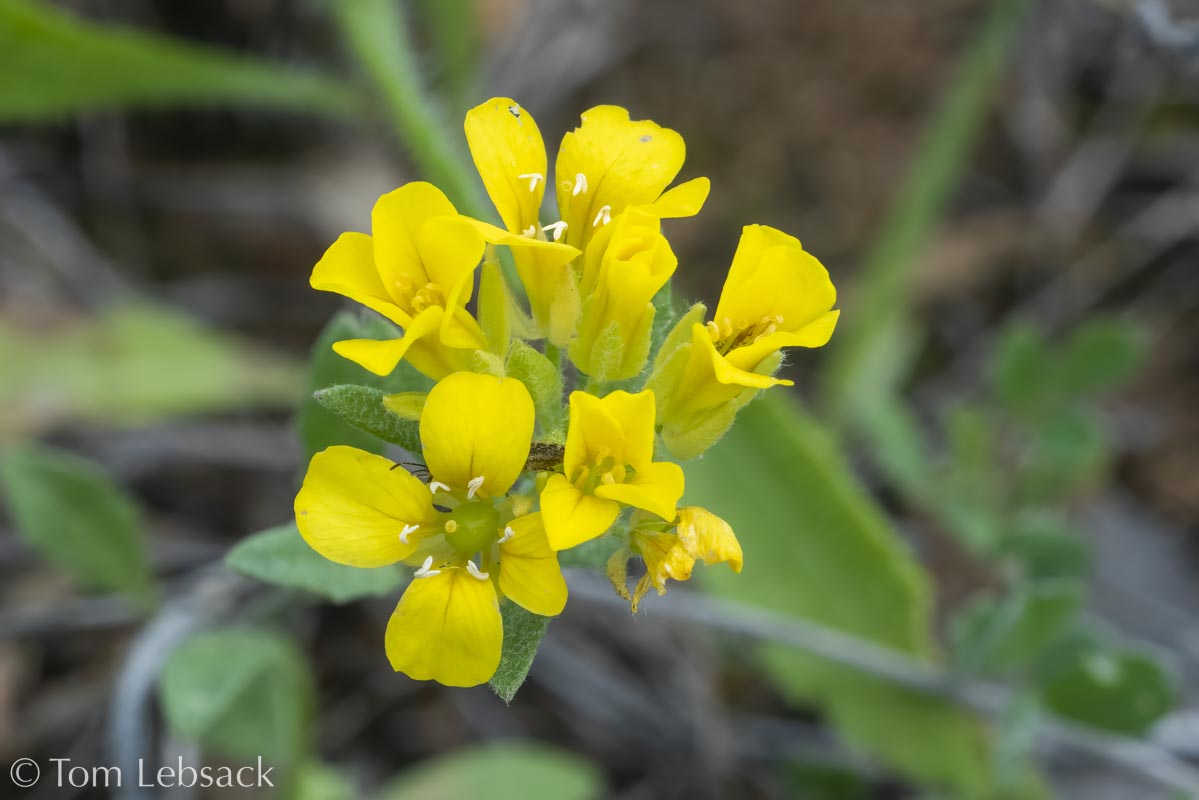Physaria densiflora
(Dense-flower Bladderpod)
| Scientific Name | Physaria densiflora (Lesquerella densiflora) | USDA PLANTS Symbol | LEDE2 |
| Common Name | Dense-flower Bladderpod, Low Bladderpod | ITIS Taxonomic Serial No. | 823076 |
| Family | Brassicaceae (Mustard) | SEINet Reference |
Click Here |
| Description |
Habitat: Sandy, calcareous or granitic soils; sandy ledges, limestone outcrops, rocky prairies in Central Texas. Plant: Annual or biennial with one to several erect, decumbent or sometimes prostrate stems up to 16 inches long, creating a low carpet of golden-yellow flowers along roadsides; stems and leaves with dense covering of fine stellate (star-shaped) hairs. Leaves: Basal leaves oblanceolate to obovate, deeply lobed and 3/8 to 2-3/4 inches long, on long petioles; stem leaves up to 2-3/8 inches long, narrowly obovate to elliptic on short petioles or sessile, margins are wavy (repand) to having a couple shallow teeth on each side. Inflorescence: Dense terminal racemes of numerous yellow to orange flowers each 1/4 to 1/2-inch across; 4 obovate to obdeltate petals and 4 elliptic sepals. Bloom Period: March to May. Fruit: Round to obovoid capsules up to 1/4-inch across on straight, spreading to nearly horizontal pedicels 3/8 to 5/8-inch long. References: Flora of North America, "Wildflowers of the Texas Hill Country" by Marshall Enquist and "Manual of the Vascular Plants of Texas" by Correll and Johnston. |
BONAP Distribution Map Map Color Key Map Color Key |
Texas Status: Native Endemic |
Banner photo of Castilleja indivisa and Lupinus ssp. taken along FM 1323 north of Johnson City, Blanco County
© Tom Lebsack 2024




